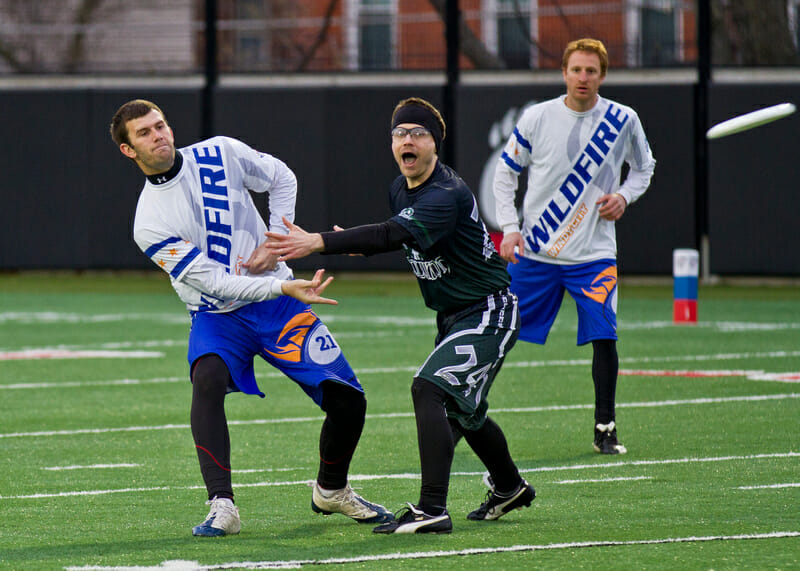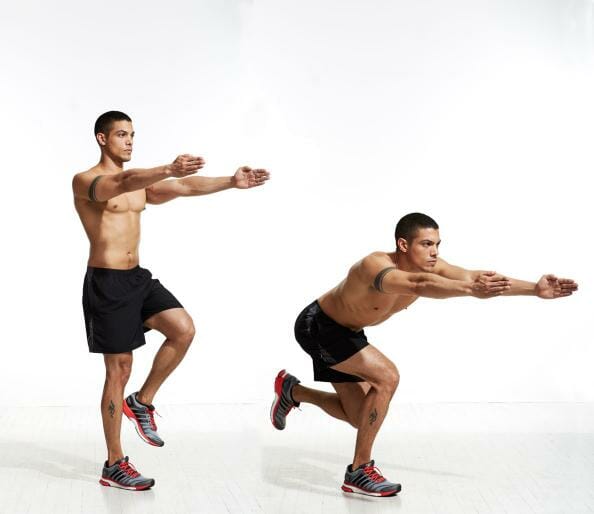Add distance to your hucks with these great exercises.
June 22, 2015 by Steven Wartinbee in Analysis with 2 comments

The ability to send the disc deep accurately and consistently is a skill shared by a select few. Almost everyone has accurate short throws, but most players can only seriously threaten up to 40 or 50 yards away, even in calm weather. If you don’t have access to a gym, but want to huck like Brodie Smith, you should be doing the following exercises.
1. Pushups
The king of upper body exercises and one bodyweight lift you should absolutely be doing if you want to add distance to your hucks. Any type you perform properly will help contribute toward throwing distance, and there are enough variations of the pushup that you’ll never become bored of the exercise. The entire upper body is generally involved in most throws longer than 30 yards; pushups contribute to the raw power behind throws for distance.
Any program that leaves you drained will help, but an excellent one is the push-up ladder during which you rest for as many seconds as push-ups performed. For example, 15 push-ups, rest 15 seconds…14 push-ups, rest 14 seconds. This is a grueling workout if properly adapted to your strength level. You can start with more or fewer push-ups, or take slightly more rest if necessary, but this will significantly improve both strength and endurance.
If regular, shoulder-width push-ups are too easy, you can try diamond (tricep focus), or wide-grip (chest focus). You can also place your feet on a raised surface to make the exercise even more difficult. Check out some of these or these for even more ideas.
2. (Skater) Squats
While nothing replaces the weighted version of the basic back squat, if you find yourself with only bodyweight to work with, you can still develop power in your legs.
Similar to the motion of a baseball swing, the power for a longer throw begins with the legs and hips, and carries through the upper body to the arm and point of release. Squats are invaluable. Do them.
Check out Tim Morrill’s very detailed and helpful discussion of the importance and method of skater squats.
3. Planks
A significant and underrated amount of throwing power and stability is derived from your thoracic spine and core, respectively, especially with backhands. You should work on your core stability with isometric work, like planks.
Tommy Li demonstrates excellent form on this backhand huck, stepping out and generating most of the throw’s power from his torso while maintaining a straight arm to ensure the throw remains flat and sits in space in front of his receiver.
http://gfycat.com/BrownSkinnyHarvestmouse
That being said, a very similar technique to the one that most players use for generating power on backhands can also be used on forehands.
http://gfycat.com/DefenselessCarelessFritillarybutterfly
Watch how much Alex Thorne twists and utilizes his thoracic spine as he steps into this flick huck, while his hips and core remain (for the most part) stable. While most throwers’ forehand hucks appear to be almost entirely arm and wrist motion, Thorne twists his upper body a full 90 degrees before unleashing a shot to the endzone. This allows him to put much more power and consistency into his forehand than if he had relied solely on his arm.
Both Thorne and Li’s throws show impressive body control and stability. Strengthening core stability will go a long way toward being able to generate the sort of reliable power and balance on deep shots that they demonstrate. Planks develop balance and the stabilizing muscles that directly correlate to hucking consistency.
4. Pullups/Chinups
These exercises are critical to developing a strong back as well as overall upper body strength, and add a great balance of pulling to pushups. The back is frequently overlooked in favor of more immediately visible muscle groups like the chest and shoulders, but is perhaps more important in developing strength and preventing imbalances that could lead to injury.
If you’re struggling to complete sets of more than a few chinups (palms towards you) or pullups (palms away from you), start by simply hanging from the bar. This will both begin to work the muscles in your back, as well as improve your grip strength, which is critical for a solid release on any throw, especially in wind or rain. Once you’re able to hold that for an extended period of time, but are still struggling with pull-ups, try hanging at the top position as an intermediate exercise.
Both exercises respond extremely well to volume; do a lot of pullups and you’ll get a lot better at them.
***
Two closing notes:
– Bodyweight exercises are great when you have nothing else to work with, but can always be enhanced by adding weight; weighted lifts are the best means of building strength and power. When possible, use bodyweight exercises to enhance a regimen centered around lifting. Pushups can complement the bench press, while weighted rows and overhead press will help build a stronger back. Nothing replaces deadlifts and weighted squats. That said…
– Some of the best and most consistent deep throwers I know and have watched look like they’ve never lifted a weight in their lives. Size and strength are not all there is to hucking; proper windup and release form also go a very long way toward developing that 80 yard bomb.
RELATED: Ultiworld’s Archive On Throwing Tips And Techniques
Credit to Roger Chu for helpful advice during the writing of this article.
